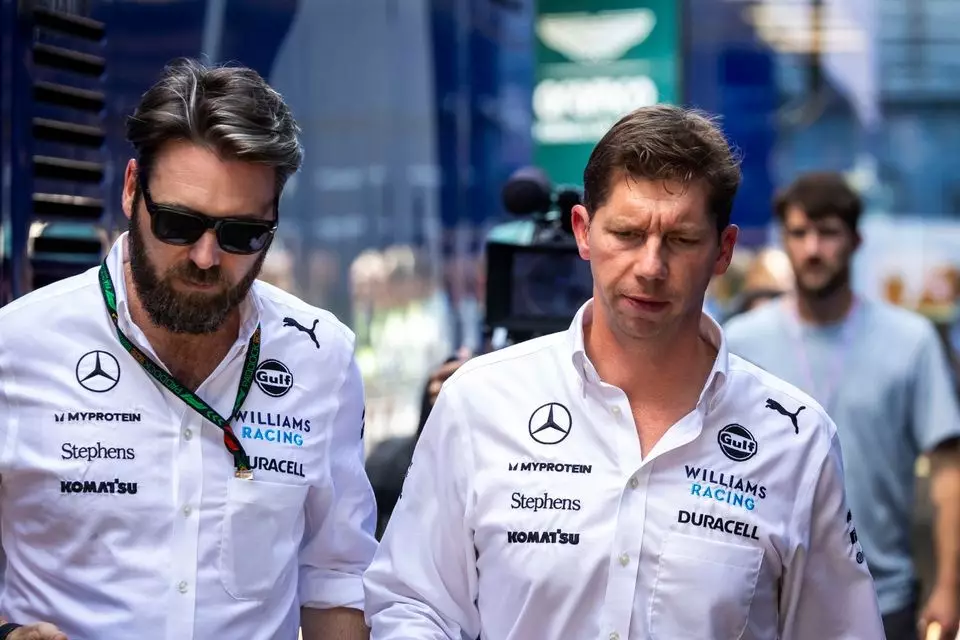As the motorsport world anticipates significant changes in the Formula 1 landscape, the Williams Racing team finds itself at a crossroads. Team principal James Vowles has expressed candidly that the upcoming 2025 season may pose considerable challenges for the British outfit. As the regulations are set to evolve dramatically in 2026—mandating smaller and lighter vehicles with simplified aerodynamic structures—the team understands it must recalibrate its focus and resources. This shift presents Williams with both hurdles and opportunities, and the overarching question remains: will this strategy yield the long-awaited results?
Williams has been on a tumultuous journey, grappling with financial constraints and performance woes since its glory days. The team’s last significant podium finish occurred in 2017, with the sole exception being the sensational but controversial 2021 Belgian Grand Prix. The Williams family’s stewardship had hampered the team’s competitiveness, with a consistent struggle to keep pace with rivals. However, the acquisition by Dorilton Capital has injected much-needed capital and hope into the Grove-based squad. The effort to modernize infrastructure and improve performance has been evident, but will it be enough?
Vowles’s reflections on previous seasons illustrate the uphill battle facing Williams. After barely securing seventh place in the Constructors’ Championship in 2023, the team struggled at the start of the current campaign but eventually demonstrated potential through commendable performances at circuits like Monza and Baku. The statement that they were fortunate to finish in the top seven raises questions about whether their trajectory truly indicates an upward trend or if they are merely capitalizing on the misfortunes of others.
As Williams navigates the complexities of the 2025 season, Vowles has made it clear that they are willing to make short-term sacrifices for a better long-term position. “It’s going to be a hard year,” he admits while simultaneously expressing optimism about the investments directed toward the subsequent season. The team plans to adopt a trial-and-error strategy to foster significant technological leaps rather than minor incremental improvements. This approach can be risky, yet it demonstrates a willingness to innovate rather than settle for mediocrity.
Interestingly, Vowles acknowledges the likelihood of setbacks along the way. This level of transparency is refreshing, particularly in the high-pressure world of Formula 1, where team principals often tread cautiously in their public comments about performance. By accepting that they will “trip up” in their pursuit of progress, Vowles emphasizes learning as a vital component of growth—an attitude that resonates with the developmental culture fostered in successful organizations.
The inclusion of skilled drivers like Alex Albon and Carlos Sainz comes with high expectations. Both athletes have demonstrated their capabilities, and their performance will be critical as Williams seeks to take significant steps forward in 2026. Vowles has made it clear that the team will not simply aim for survival in the coming season but will commit to building a foundation that can support future successes.
Albon’s start in the Williams car has seen him articulate a balance between expectation and practicality. It will be paramount for him and Sainz to communicate effectively with the engineering team to ensure that any developments made throughout 2025 resonate positively in the car’s performance.
As the Williams team embarks upon this bold new path, the anticipation surrounding their future amplifies. With the looming changes in regulations and the understanding that the 2025 season may be fraught with difficulties, the strategic decisions made now will undoubtedly have long-lasting impacts. Vowles’s willingness to embrace challenges speaks volumes about the determination of the team. If they can successfully navigate the obstacles of this transitional period, the Williams name could once again grace the upper echelons of Formula 1—a fitting revival for one of the sport’s most storied institutions. The upcoming seasons may not yield immediate triumphs, but the groundwork laid in facing these challenges could eventually propel Williams back toward competitiveness in a sport that thrives on innovation and resilience.


Leave a Reply